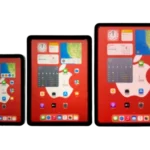Last Updated on: 21st November 2025, 10:30 am
Web site: www.apple.com/os/visionos/
Origin: USA
Category: Mobile (hedsets)
Desktop environment: GUI
Architecture: arm64
Based on: iPadOS
Wikipedia: visionOS
Media: Install
The last version | Released: active
visionOS – the Apple’s operating system for the Apple Vision Pro (Spatial Computer) mixed reality headset.
It is based on the iPadOS/macOS core and was first unveiled on June 5, 2023, at WWDC 2023.
Apple describes it as the “world’s first spatial OS,” delivering a fully 3D user interface and control using natural inputs such as gaze, gestures, and voice.
The initial version of visionOS (1.0) was released on February 2, 2024, alongside the launch of Vision Pro. The OS is built on the same technologies as iOS and iPadOS, including SwiftUI, UIKit, ARKit, and RealityKit, but adds new components for handling 3D spatial interfaces and real-time interactions.
Facial expression control has been available on the Apple Vision Pro headset since beta 3.0 Beta 1.
VisionOS was developed throughout the 2010s (codenamed “Borealis”). The operating system was initially developed under the name xrOS, but was renamed visionOS a few days before its announcement. The official release of visionOS and the Vision Pro headset was announced at WWDC 2023 (June 5, 2023). Apple stated that the device and OS would be released in early 2024. In January 2024, Apple confirmed that Vision Pro would be available in the US on February 2, 2024 (pre-orders began on January 19).
The system subsequently received major updates. At WWDC 2024 (June 10, 2024), visionOS 2 was announced and released on September 16, 2024, along with other Apple operating systems (iOS 18, iPadOS 18, etc.). At WWDC 2025 (June 9, 2025), Apple showed a preview of visionOS 26 (the third major version running on Vision Pro). Since its launch, Apple has regularly released minor updates to visionOS (such as version 2.3.1 in February 2025) with fixes and security improvements.
Architecturally, visionOS is a derivative of iPadOS/macOS: it uses the XNU hybrid kernel (as in macOS/iOS) and runs on Apple Silicon (ARM) processors, but includes a new “real-time subsystem” for processing graphics and spatial input. The OS supports familiar frameworks for developers such as SwiftUI, UIKit, ARKit, RealityKit, and others, as well as new features such as foveated rendering and optimized processing threads for minimal latency.
The main feature of the interface is a three-dimensional user interface, where “floating” windows and objects can be placed in space around the user and react to natural lighting (casting shadows, indicating scale and distance). Data input is carried out using gaze, hand gestures, and voice: the user simply looks at an interface element and presses a “pinch” gesture with their fingers to select it, or swipes in the space to scroll. The system also recognizes voice commands (Siri) and supports the connection of external keyboards, trackpads, and gamepads. EyeSight technology displays the user’s eyes on the Vision Pro’s external transparent display, allowing others to see where the headset owner is looking. Eye gaze and surrounding data are processed locally on the device (eye data and finger movements are not transmitted to applications).



